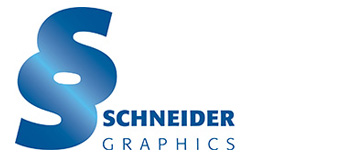Paper Choices
There are many different things to consider when deciding which type of paper to print on. Everything from color brightness and image clarity are affected by the kind of paper you use.
Coated vs. Uncoated
Coated papers provide excellent color, smoothness, opacity and print definition. They are ideal for printing projects such as photographs and brochures. Coated papers come in a variety of finishes, the two most common being glossy and matte. Glossy paper reflects light creating a shiny appearance. Matte paper absorbs light creating a non-reflective surface that is easier to read.
Uncoated papers come in a variety of textures and finishes. They have a more natural look and work great for invitations, stationery and business cards. Uncoated papers can have a smooth finish or one that’s more textural like linen and felt. Choosing the right finish for your printed project is important to give it the best overall look and feel.
It is important to know what the final finished application of your printed project will be when choosing a paper. Ask yourself the following questions:
Will the project be mailed?
If so, you may want to add a coating or a varnish to protect your project from damage in the mail. You may also want to choose a lighter weight substrate that will pass easily through postal sorting machines.
Are there many photos?
If you have bright colored photos in your design. Gloss coated paper is better suited for photos while uncoated or matte coated paper is ideal for readability.
Opacity
A paper’s opacity describes the amount of light which is transmitted through it. This determines how much printing will be seen through the reverse side of a sheet. Complete opacity is 100% which means that no light can pass through, while a lower percentage lets more light through. Opacity is important to have in mind when printing booklets, as a sheet with good opacity will prevent ”show through text” when printing on both sides. A paper’s opacity can increase or decrease depending on the use of different fillers, but also by its weight, whiteness or coating.
Brightness
The brightness measures the percentage of a wavelength of blue light that a sheet reflects. It’s typically expressed on a scale of 1 to 100 with 100 being the brightest. Most papers reflect 60-90% of light. The brightness of a paper can effect readability, the perception of ink color and the contrast between light and dark hues.
How is the weight of paper measured?
Paper weight is an important component to consider when printing. Heavier media often conveys quality and provides durability. Unfortunately, sorting through the various methods of labeling a paper’s weight is not always straightforward. First, there are three common methods for specifying paper weight and thickness: U.S. Basis Weight (Bond, Book, Index, Cover, Tag, Points, Offset ), Metric weight (GSM or G/m2) and, often interchangeable, Points or Mils (an actual Caliper reading of the paper thickness).
The U.S. Basis (not basic) Weights, are the most confusing, simply because the same paper can yield different values based on the “Basis Weight” applied while manufacturing the paper. And higher values don’t always equate to heavier/thicker print media. For example, a sheet of 100lb Text paper is actually much thinner than an 80lb Cover stock.
The “Basis Weight” is defined as the weight of 500 sheets of paper in its basic unit uncut size, which means before being cut to Letter size or Legal size, the paper is weighed and categorized. The most common sizes, some of which you may recognize, are Bond, Text, Book, Cover, Index and Tag. An uncut sheet of Bond paper is 17 x 22 inches, while an uncut sheet of Cover paper is 20 x 26 inches. If 500 sheets of Bond paper (17 x 22 inches) weigh 20 lbs, then a ream of paper cut to Letter size will be labeled as 20 lb. And if 500 sheets of Cover paper (20 x 26 inches) weigh 65 lbs, then a ream of this paper trimmed to tabloid size would be marked as 65lb. This may be a lot to grasp, but don’t feel overwhelmed! Often professional printers don’t keep track of all the permutations. Based on experience from using a small subset, they have a pretty good idea of what to expect when reaching for a 24lb Bond versus a 60lb Cover versus a 110lb Index.
